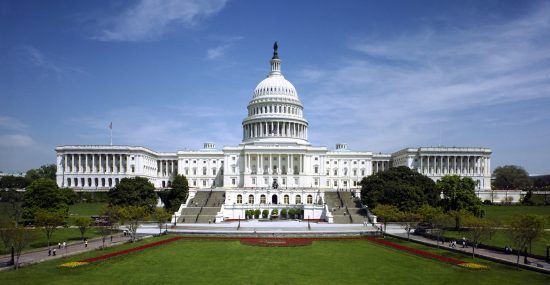The state-led drive towards 100% renewable energy in the United States continues at breakneck speed as attention turns to Washington State which just passed a bill through both chambers of the House to require 100% carbon-free power by 2045 and a coal phase-out by 2025.
If Washington’s proposal is signed into law – a near-certainty, considering that the State’s Governor, Jay Inslee, was the man to propose the plan to begin with – it would become the country’s fourth state and sixth state-level jurisdiction to pass a 100% plan.
This follows in the wake of Hawaii, California, New Mexico, Puerto Rico, and Washington DC, and joins other states including Wisconsin, Minnesota, and Illinois who are all proposing similar goals.
In fact, in the last few weeks alone a number of these states have proposed or passed legislation which will set them on paths to require either 100% renewable energy or 100% carbon-free power (which would include renewables plus technologies such as nuclear power).
Wisconsin, Minnesota, and Illinois all made announcements in early March which would, if approved, set in place clean energy targets for Wisconsin and Minnesota and Illinois on a path to 100% renewable energy, all by 2050.
New Mexico’s legislature endorsed its 100% zero-carbon bill in the middle of March, while Puerto Rico passed a bill in late-Marchto move the island to 100% renewable energy by 2050.
Fast-forward to this week and the Washington State House and Senate passed a bill to adopt 100% carbon-free power by 2045, and it now rests on the desk of Governor Jay Inslee, newly-announced Democratic Presidential nominee, who originally proposed the plan towards the end of 2018.
The bill will therefore likely pass through the Governor’s office quickly, before it must return to the Senate for reconciliation after minor amendments were made in the House.
Currently, Washington State generates 68% of its electricity from hydroelectric sources, while coal and natural gas combine to account for 24%, and nuclear power provides 4%. This provides the opportunity for significant wind and solar expansion which could also be paired with energy storage.
Further, while the bill allows for “carbon-free” electricity generation, it also dictates that electric utilities must “rely on renewable resources and storage” – a strong message that will buoy local renewable interests.
At the same time, the Nevada Senate voted this week to unanimously and across party lines update its Renewable Portfolio Standard (RPS) to 50% by 2030, under Senate Bill 358, an increase from the state’s current RPS of 25% by 2025.
Currently, Nevada is dramatically reliant on out-of-state natural gas for its electricity generation, with 70% of the state’s electricity coming from natural gas in 2017.
“SB 358 adds Nevada to the ranks of leading states in the development of abundant clean, low-cost and efficient renewable energy,” said Sean Gallagher, vice president of state affairs for the Solar Energy Industries Association (SEIA). “We’re grateful that Senator Brooks and legislators from both parties support increasing the state’s RPS.”
The State of Maryland also passed this month its Clean Energy Jobs Act which will increase its renewable electricity standard to 50% by 2030 while seeking for ways to go 100% by 2040.
Currently, the State’s renewable electricity standard is 25% by 2020, highlighting further the strong demand and political and public appetite for renewables.
Currently, Maryland generates very little of its electricity from renewable energy sources and is heavily reliant on both nuclear power – which accounts for the largest share of the state’s energy mix – natural gas, and coal-fired power. In 2017, Maryland’s Calvert Cliffs nuclear power station generated 44% of the state’s net electricity generation, while renewables only accounted for 10%.
“Late last night, Maryland state lawmakers passed the Clean Energy Jobs Act (CEJA), a historic bill that puts the state on track to 50% renewable energy by 2030, including a 14.5% carve-out for solar energy,” said the SEIA’s Sean Gallagher, speaking earlier this month.
“The bill also requires state officials to examine pathways to 100% clean energy by 2040. Passing 95-40 in the House and 31-15 in the Senate, CEJA takes Maryland toward the top of a growing list of states with ambitious and significant renewable energy targets.
After Maryland saw a chunk of its solar jobs lost in 2018, this legislation will spark economic activity in the state that will bring many of those jobs back, while expanding clean energy production and strengthening the state’s economy.










